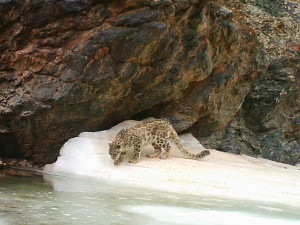Crossing borders with snow leopards
Wildlife Without Borders
China remains a stronghold for snow leopards, with about 60% of their entire global population (estimated to be less than 10,000). Their range stretches across 12 countries, ten of which border China. The sheer size of snow leopard’s home ranges means protected areas are seldom big enough. We’ve been supporting Philip Riordan of Wildlife Without Borders and Shi Kun of the Beijing Forestry University’s Wildlife Institute, to work out how snow leopards move across the landscape and to identify important corridors and habitat areas.

Community involvement
Phil and Kun are also training local government wildlife teams and local communities in surveying techniques, resulting in the first reliable population estimates for many areas. So far it suggests that snow leopards are surviving outside reserves, which is good news. Young animals were spotted in most areas, so snow leopards are breeding, but we’re yet to see how they fare as they mature and spread into areas where they’re exposed to more human activity.

Connecting the landscape
The work has led to two exciting successes: a project to extend the Qilianshan Nature Reserve, linking neighbouring areas into a new National Park; and a transboundary collaboration with Kazakhstan and Kyrgyzstan to join protected areas and conservation effort for snow leopards across borders.
Thank you to all those involved, and to all of you who helped to fund this work.
Donate now to support our current projects
